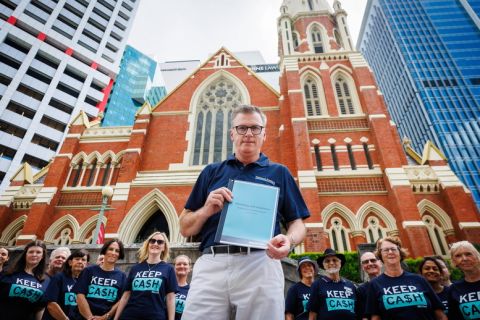Report supports super tax concessions – and controversial reforms
Superannuation tax concessions are a hot political topic. Are retirees and taxpayers getting value for money?

Those seniors counting on superannuation and its tax benefits to fund a comfortable retirement may need to reconsider any unrealistic expectations.
Current political debate and community discussion about super tends unrealistically towards reforming the tax concessions because they are “unfair and/or unsustainable”.
That’s the warning from David Knox, a respected retirement investment advisor and Senior Partner at Mercer Australia.
His latest report, Rethinking Super Tax Concessions, aims to assess the long-term financial benefits of tax concessions for individuals and government.
He asks, “Does the government’s investment in superannuation provide a fair outcome for individuals and improve the government’s future fiscal position?”
Dr Knox concludes that super tax concessions are a sensible government expenditure and investment in the future. He says that for “average income earners the cost of the concessions is less than the future age pension saving arising from superannuation”, and that the current setting “provides the government with a net gain over the longer term”.
The recent Intergenerational Report (IGR) confirmed the success of super, which it says has cut the cost to government of the pension.
The IGR forecasts that even though the number of people over 65 is set to double, the cost of the Age Pension is going from drop from 2.3% to 2% of gross domestic product (GDP) over the next four decades.
The report says the current super system and tax concessions can be improved. It says there is a need to make it fairer and ensure everybody receives value from the concessions.
To that effect, it makes these recommendations:
- Reduce the taper rate of the pension assets test from $3 per fortnight to $2 per fortnight.
Increase the current minimum drawdown rates for pension products by two percentage points to increase the level of drawdown during retirement.
Maintain the current concessional contributions cap.
Halve the current non-concessional contribution cap or introduce a lifetime cap for non-concessional contributions.
Reduce the threshold for the Division 293 tax from $250,000 to $225,000 (or 20% above the top marginal income tax rate). Division 293 tax is an additional tax on super contributions.
Introduce the additional tax on investment earnings for balances above $3 million while ensuring that this cap is always greater than or equal to the indexed transfer balance cap.
While retirees might be pleased with the recommendation to reduce the pension taper rate and support the recent federal government move to increase the tax on pension account earnings of $3 million, many retirees may not agree with the recommendation to increase the minimum drawdown rate for pension products.
Dr Knox has also questioned the basis on which government measures the old-age dependency ratio, which is the number of people aged 65 or over per 100 people of working age. Traditionally, “working age” is defined as between 15 and 64.
Government policy is framed around this information, which identifies the “problem” as being that the ratio of people “too old” to work and those of working age is growing, which is bad for the economy.
However, Dr Knox suggests that age range is now outdated and doesn’t reflect reality. More older people are working longer than ever and are not the economic burden they are made out to be.
He says the old-age dependency ratio should be gradually increased from 65 to the upper end of the workforce range.
The greater number of Australians over 65 working is likely to help, rather than hinder, the economy.
In conclusion, Dr Knox says, “Mercer does not deny that Australia’s population is ageing. That is a fact, but the consequences are not as alarming as some would suggest.”
The Australian Prudential Regulation Authority (APRA) has released the results of the 2023 superannuation performance test.
As a result, 60,000 superannuation members with $4 billion in retirement savings, mostly customers of retail funds offered by Insignia Financial (formerly IOOF) and AMP, will be sent letters telling them their investment option failed the test.
“You should think about moving your money to a different super investment option or fund,” the letter, which the trustees of the funds are required by the regulator to send to members, will read.
Almost 100 investment options in the so-called “choice” market failed the test. These included a soon-to-be-closed bond fund for Citibank employees, a number of options run by Islamic super fund Crescent Wealth and the high-growth offering of an industry fund for meat workers.
An environmental social governance (ESG) fund run by Australian Retirement Trust, the $260 billion amalgam of the old QSuper and Sunsuper, also failed. The option has 8,500 members and will be shut next year.
The most affected funds are retail funds owned by AMP and Insignia. The Australian Prudential Regulation Authority (APRA) said three-quarters of failed products were concentrated in offerings from four super fund trustees controlled by the two companies.
Information about the APRA performance test is available here.
Further reading: The Australian, Your Life Choices, APRA test results, APRA test








